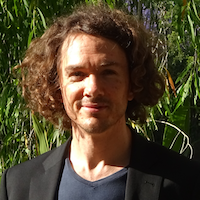Article
Macular Degeneration Patient Visual Hallucinations Associated with Retina
Author(s):
The effects of Charles Bonnet Syndrome have been fairly documented, yet its pathology has been minimally assessed.

David Painter
Many patients with age-related macular degeneration (AMD) go on to develop a condition called Charles Bonnet Syndrome (CBS,) which leads to visual hallucinations in patient with significant loss of vision. While many have offered hypotheses as to why these hallucinations occur, few have tested them.
In a recent study, David Painter, a postdoctoral research fellow at the University of Queensland, and his team tested one of the most commonly cited theories—that the hallucinations are caused by overexcitability.
Painter told MD Magazine® his team had noticed a gap in scientific literature pertaining to a common type of visual hallucinations.
“Previous studies have shown that patients have higher brain activity when hallucinating, but what about in the absence of hallucinations?” Painter said. “We found that their brains are more excitable even when they were not hallucinating.”
The only way to diagnose CBS is through patient reports and exclusion of other causes. The new study shows that an EEG can identify overexcitability in the brains of patients with the disorder, whether or not they are currently experiencing a hallucination.
The scientists recruited 24 participants and split them into 3 groups of 8. One group of patients with AMD who had visual hallucinations consistent with CBS (CBS group), patients with macular degeneration without hallucinations (MD group), and older controls with normal (age-appropriate) vision (control group).
To test the hypothesis, the researchers used electroencephalography (EEG) readings. Patients were hooked up to an EEG while the scientists stimulated used images of checkerboards and letters on a screen to stimulate the peripheral retina (which is still intact in patients with macular degeneration.)
They found that patients who had reported having experienced visual hallucinations had a “huge visual response,” as measured by the EEG’s reading of cortical activity, compared to those who did not experience hallucinations.
A commentary accompanied the article in Current Biology, highlighting future questions about CBS. For example, the study took an average of excitability in the cortex, but it is possible that hyperexcitability is localized, rather than widespread.
Additionally, patients describe a range of visual hallucinations ranging from geometric shapes to complex scenes. It is unknown if individual patients consistently experience the same types of hallucinations on multiple occasions.
The findings could help prevent misdiagnosis of the disorder, which is important because as Painter explained, “There is a class of hallucinations associated with age-related degeneration of the retina that are a natural consequence of deprived visual areas of the brain.”
Painter added that patients with these hallucinations may not require medication, and should be reassured by a healthcare provider that they are not a result of brain disease.




